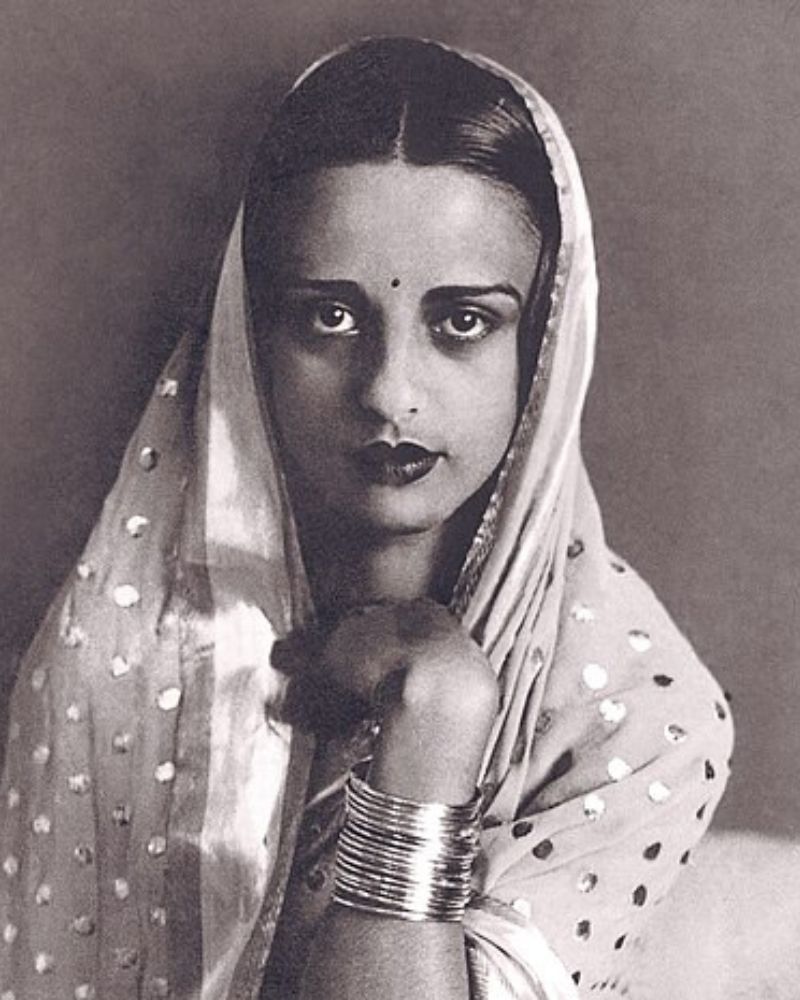Amrita Sher-Gil: The Trailblazer of Modern Indian Art

Amrita Sher-Gil was a revolutionary artist whose work bridged the gap between Western modernism and Indian traditions. Widely regarded as one of the most influential painters in Indian art history, she is celebrated for her bold use of color, expressive figures, and deep exploration of Indian life and culture. Her ability to seamlessly merge Western and Indian artistic styles allowed her to carve a unique place in the history of art, making her one of the most iconic figures in the evolution of modern Indian painting. Despite her short career, her artistic legacy continues to inspire generations of artists.
A Fusion of European and Indian Styles
Amrita Sher-Gil’s artistic journey began in Europe, where she studied at the École des Beaux-Arts in Paris. Her early works were influenced by the realism of Western masters like Paul Cézanne, Henri Matisse, and Paul Gauguin. This period of her life saw her embrace European academic techniques, with an emphasis on form, light, and the human figure. These influences were evident in her works, which often depicted the human form with great precision and realism.
However, upon returning to India, Sher-Gil underwent a transformation. She began to reject the purely Western styles she had learned in Europe and sought to create an art form that was more in tune with her Indian heritage. Drawing inspiration from traditional Indian art forms, such as Mughal miniatures, Ajanta cave paintings, and Indian folk art, she infused her work with a distinctly Indian sensibility. The fusion of Western techniques with Indian themes became the hallmark of her unique style, making her one of the pioneers of modern Indian art. Through her work, Sher-Gil successfully bridged the gap between the two worlds, creating a modernist art that was deeply rooted in Indian culture.
Depiction of Indian Society and Women
One of the most striking and defining aspects of Amrita Sher-Gil’s work was her focus on Indian women. At a time when women in India were often relegated to passive, idealized roles in art, Sher-Gil portrayed women as strong, complex, and emotionally nuanced individuals. She often depicted rural and marginalized women in their daily lives, offering a dignified and raw portrayal of their struggles, joys, and inner worlds.
Works like Bride’s Toilet, Three Girls, and Women on the Charpai reflect Sher-Gil’s deep sensitivity to the lives of Indian women. These paintings emphasize the isolation and introspection of women, capturing their quiet strength in an emotionally powerful way. Unlike the romanticized depictions of women in traditional Indian art, Sher-Gil’s women were real, raw, and vulnerable, yet dignified. Her ability to evoke empathy for her subjects, and her unflinching portrayal of their inner lives, made her work both revolutionary and socially relevant.
Exploration of Indian Identity
Sher-Gil’s exploration of Indian identity was a key theme throughout her artistic journey. Having lived between Europe and India, she experienced both Western modernity and traditional Indian culture, and her art reflected this duality. Her travels across India exposed her to a wide range of landscapes and communities, and she sought to capture the essence of India’s rural heartland.
In works like The Village Scene and Hill Women, Sher-Gil moved away from the city-centric depictions of India, instead focusing on the everyday lives of rural women and the vibrant life in the villages. Her use of earthy tones and strong outlines reflected the simplicity and authenticity she saw in rural India. This approach, combined with modernist techniques, created an art that was rooted in India’s cultural heritage yet forward-looking in its execution. Sher-Gil’s work became a vehicle for exploring the complexities of identity, tradition, and modernity, offering a nuanced view of Indian society.
Breaking Barriers in the Art World
Amrita Sher-Gil was not only an innovator in art but also a trailblazer in breaking societal norms. As a woman in a male-dominated art world, she defied expectations through both her work and her personal life. She was unapologetically independent, and her art reflected her fearless approach to life. Sher-Gil’s European and Indian heritage gave her a unique perspective, allowing her to critique both colonial influences and traditional conservatism.
Her contributions to the art world were not only about breaking artistic boundaries but also about challenging the gender norms of her time. She became one of the first modern Indian artists to gain international recognition, paving the way for future generations of women artists in India.
Legacy and Influence
Though her life was tragically short, Amrita Sher-Gil’s impact on Indian art is immeasurable. Her works are now celebrated as national treasures and are preserved in major art institutions across India. She is often compared to artists like Frida Kahlo, as both women used their art to explore deeply personal and socially relevant themes. Sher-Gil’s ability to blend Indian and Western artistic traditions, her fearless exploration of identity and womanhood, and her commitment to portraying the realities of Indian life have cemented her place as one of the most significant figures in modern Indian art.
Her work continues to inspire, reminding the world of the power of art to transcend boundaries, challenge societal norms, and tell the stories of those often overlooked. Amrita Sher-Gil’s legacy lives on through the continued appreciation of her pioneering contributions to the world of art.